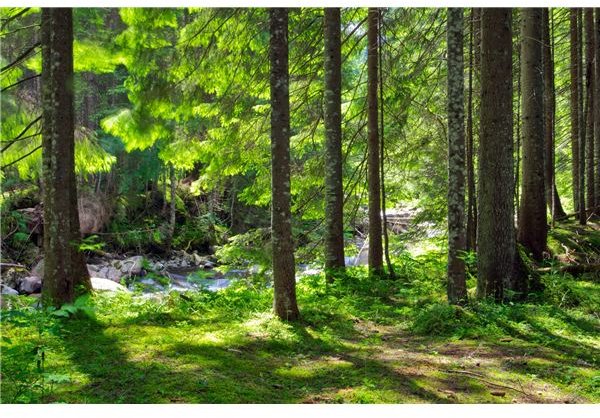How Excess Carbon Dioxide Affects Plant Life: Some Surprising Findings
Climate change, greenhouse gasses–these are all words that have been bandied about for several decades at this point, but what if we can find a positive side to extra carbon dioxide in the air? We all know that plants use carbon dioxide for food. Some studies have found that excess carbon dioxide can actually help plants grow larger adn more green, while at the same time becoming more water efficient.
Plant Growth
The photosynthesis process uses carbon dioxide and produces oxygen and glucose. Higher levels of carbon dioxide in the air actually causes plants to photosynthesize and grow faster. Here’s what we can expect out of faster-growing plants:
- As photosynthesis takes place, more carbon dioxide is removed from the air.
- After the process, oxygen is released back into the air, making a healthier environment for people and animals.
- The plant stores the glucose it produces to use for later growth. In food crops, this means that more food is produced, helping us deal with overpopulation issues more easily.
- The additional glucose production also acts as carbon sequestration.
Plant Lifespan and Adaptation
In addition to providing faster plant growth, the excess carbon dioxide in the air is also causing plants to live longer and not die off as quickly. This helps keep the carbon dioxide it has stored in glucose out of the atmosphere for a longer period of time and allows the plant to continue scrubbing carbon dioxide out of the atmosphere.
Plants in higher carbon dioxide environments don’t open their stomata as wide. This means they have smaller water losses through transpiration, lowering their need for water and resulting in a more drought resistant plant.
Carbon Sequestration
Because plants use carbon dioxide when making glucose, it acts as a carbon sink. This means carbon dioxide is being kept out of the air as it is held by the plant as energy reserves. This creates a natural buffer to control how quickly carbon dioxide is allowed to re-enter the atmosphere.
If the plant is then harvested and eaten, the carbon is released back into the atmosphere instead of remaining sequestered. Though we get a short-term sequestration out of food, it is not nearly as effective at sequestration as forests or plant matter being turned under in cultivation to create organic matter, improving the soil’s ability to hold nutrients and moisture.
This doesn’t mean we need not worry about increasing carbon dioxide levels. Even with more vigorous growth, we need more plants to keep atmospheric carbon dioxide at reasonable levels at a time when we see decreasing forest canopy due to immediately pressing agricultural concerns. As plants start to die after a longer life cycle where they have stored more glucose, they will release the sequestered carbon back into the atmosphere.
Though this discovery means that we’re not as badly off as we could be, conservation and reduced carbon emissions must still be a priority to keep our planet from slowly becoming a greenhouse that supports no life. It will be interesting to see if further studies support these findings and can show us more ways of using the information to our advantage. Does this mean we could grow more plants in arid areas or replenish dwindling rainforests?
References
- Plants Need CO2: CO2 is Green and Green is Good. www.plantsneedco2.org/default.aspx?MenuItemID=103
- Time: In the Greenhouse: Forests Get More Water Efficient as Carbon Dioxide Levels Rise. science.time.com/2013/07/11/in-the-greenhouse-forests-get-more-water-efficient-as-carbon-dioxide-levels-rise/
- Effects of Rising Atmospheric Concentrations of Carbon Dioxide on Plants. http://www.nature.com/scitable/knowledge/library/effects-of-rising-atmospheric-concentrations-of-carbon-13254108
- Climate Central: Study Finds Plant Growth Surges as CO2 Levels Rise. www.climatecentral.org/news/study-finds-plant-growth-surges-as-co2-levels-rise-16094
